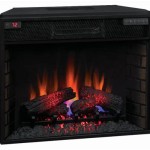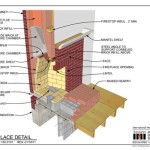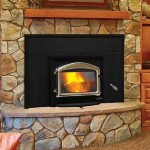Understanding Fake Wood Gas Fireplaces: Aesthetics, Functionality, and Considerations
Fake wood gas fireplaces, also known as vent-free or ventless gas fireplaces, provide a simulation of a traditional wood-burning fireplace without requiring a chimney or venting system. These appliances operate by burning natural gas or propane and releasing the combustion byproducts directly into the living space. While offering aesthetic appeal and supplemental heat, they raise several considerations regarding safety, efficiency, and indoor air quality. Understanding the intricacies of fake wood gas fireplaces is crucial for making an informed decision about their suitability for a given environment.
The fundamental principle behind fake wood gas fireplaces revolves around complete combustion. Manufacturers design these fireplaces to burn fuel as efficiently as possible, minimizing the production of harmful emissions like carbon monoxide. They incorporate oxygen depletion sensors (ODS) that automatically shut off the gas supply if the oxygen level in the room decreases to a potentially dangerous level. This safety mechanism is designed to prevent carbon monoxide poisoning in cases where ventilation is insufficient.
Aesthetically, fake wood gas fireplaces come in a variety of styles, ranging from traditional log sets to modern linear designs. The "fake wood" component typically consists of ceramic logs configured to mimic the appearance of a real wood fire. These logs are carefully crafted to enhance the visual appeal and create a realistic ambiance. The flame patterns and heat output are often adjustable, allowing users to customize the fireplace's performance to suit their preferences. The units can also be enclosed in decorative mantels to enhance the visual appeal of the room.
Key Point 1: Safety Mechanisms and Ventilation
The presence of an ODS is a critical safety feature in every fake wood gas fireplace. This sensor constantly monitors the oxygen levels in the room. If the oxygen concentration drops below a predetermined threshold, indicating a potential buildup of combustion byproducts, the ODS triggers a shutoff of the gas supply, extinguishing the flame and preventing further emissions. While the ODS provides a crucial layer of protection, it is not a substitute for proper ventilation. Manufacturers emphasize the importance of maintaining adequate airflow in the room where the fireplace is installed. This ventilation can be achieved through open windows, doors, or dedicated ventilation systems. The recommended ventilation requirements are typically outlined in the manufacturer's instructions and should be strictly adhered to.
Building codes often dictate specific requirements for vent-free gas fireplaces, including minimum room size and ventilation provisions. These codes are designed to ensure safe operation and minimize the risk of carbon monoxide poisoning. Prior to installing a fake wood gas fireplace, it is essential to consult with local building officials to determine the applicable regulations and obtain the necessary permits. Ignoring these regulations can result in fines, safety hazards, and potential legal liabilities.
Carbon monoxide detectors should be installed near any gas-burning appliance, including fake wood gas fireplaces. These detectors provide an additional layer of protection by alerting occupants to the presence of carbon monoxide, even if the ODS malfunctions. Regular testing of carbon monoxide detectors is crucial to ensure their functionality and effectiveness. Batteries should be replaced periodically, as recommended by the manufacturer. The synergistic effect of a functioning ODS, adequate ventilation, and reliable carbon monoxide detectors significantly enhances the safety profile of fake wood gas fireplaces.
Key Point 2: Combustion Byproducts and Indoor Air Quality
While designed for complete combustion, fake wood gas fireplaces still produce some combustion byproducts, including carbon dioxide, water vapor, and trace amounts of nitrogen dioxide and unburned hydrocarbons. The levels of these emissions are typically low when the fireplace is functioning correctly and the room is adequately ventilated. However, in poorly ventilated spaces, these byproducts can accumulate, potentially impacting indoor air quality. Individuals with respiratory sensitivities, such as asthma or allergies, may be particularly susceptible to the effects of these emissions.
The presence of water vapor produced by the combustion process can also contribute to increased humidity levels in the room. In some cases, this can be beneficial, particularly during dry winter months. However, excessive humidity can promote the growth of mold and mildew, potentially leading to health problems and structural damage. Monitoring humidity levels and ensuring adequate ventilation can help mitigate these risks.
The type of fuel used (natural gas or propane) can also influence the emissions profile of a fake wood gas fireplace. Natural gas typically burns more cleanly than propane, producing lower levels of certain pollutants. However, both fuels can be burned safely and efficiently when the fireplace is properly maintained and operated in accordance with the manufacturer's instructions. Regular maintenance, including cleaning the burner assembly and inspecting the logs, can help ensure optimal combustion and minimize emissions.
Key Point 3: Efficiency and Operating Costs
Fake wood gas fireplaces typically have lower energy efficiency ratings compared to vented gas fireplaces or other heating appliances. This is because the heat generated by the combustion process is released directly into the room, rather than being vented outside. While this can provide supplemental heat and create a cozy ambiance, it also means that a portion of the heat is lost through air leakage and convection. The overall efficiency of a fake wood gas fireplace depends on several factors, including the design of the unit, the quality of the insulation, and the ventilation rate of the room.
Operating costs for fake wood gas fireplaces vary depending on the price of natural gas or propane, the frequency of use, and the heat output setting. Using the fireplace as a primary heating source can result in higher energy bills compared to using it for supplemental heating only. It is advisable to carefully consider the operating costs when deciding whether to install a fake wood gas fireplace and to factor these costs into the overall budget. Smart thermostats can optimize the unit's run time, lowering energy bills.
The cost of purchasing and installing a fake wood gas fireplace also needs to be considered. These fireplaces range in price from several hundred to several thousand dollars, depending on the size, style, and features. Installation costs can also vary depending on the complexity of the project and the need for any modifications to the existing structure. Obtaining multiple quotes from qualified installers is recommended to ensure a fair price and professional workmanship. Annual maintenance costs, typically involving cleaning and inspection, should also be factored into the long-term budget.
Furthermore, selecting the appropriate British Thermal Unit (BTU) rating is essential for efficient and safe operation. BTU ratings dictate the heating capacity of the unit; a fireplace with too high a BTU output for a small space can lead to overheating and inefficient energy expenditure. Conversely, a unit with too low a BTU could be ineffective in larger rooms. Calculating the room's heating requirements based on square footage and insulation factors is a critical step. Local HVAC professionals can offer advice.
Finally, alternative heating options, such as electric fireplaces or heat pumps, should be evaluated for comparison. Each option presents its own set of pros and cons concerning cost, efficiency, environmental impact, and suitability for specific heating needs. A comprehensive comparison ensures the selection of the most appropriate solution for a given situation.

Fake Logs For Gas Fireplace Natural

Gas Log Fires Artificial Fireplaces Fake Stone

These Beautiful Fake Metal Logs Are A Perfect Addition To Your Existing Outdoor Fire Tables

10pcs Ceramic Wood Gas Log Set Fireplace Imitation Propane Firepit Logs Com

Grisun Gas Fireplace Logs Set Ceramic White Birch Log For Intdoor Inserts Vented Electric Fireplaces Outdoor Firebowl Linear Fire Pits Fiber Fake Wood 6pcs Com

Zero Clearance Vs Prefabricated Fireplace Full Service Chimney

Which Is Better Vented Or Non Gas Logs

9 Pcs Fake Gas Fireplace Logs Ceramic Wood Fire Pit Sets For Ind Eco Firepits
:max_bytes(150000):strip_icc()/ventless-gas-fireplaces-4160746-hero-f9d4bdcd9bd446eb84406de306f790ba.jpg?strip=all)
How To Pick Out A Ventless Gas Fireplace

The Downsides To Fake Fireplaces








